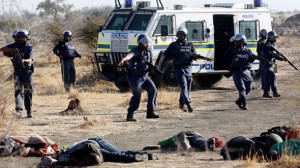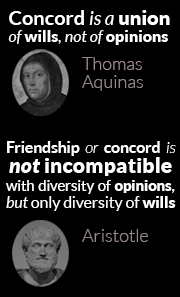Lonmin’s PR credibility gap
You cannot have missed it. A strike at the Marikana platinum mine owned by Lonmin in South Africa led to 34 workers being killed and many more injured in a confrontation with the police. Weeks later the number of people on the illegal strike has increased considerably with only 13 per cent of workers turning up at the mine on Monday.
It is not my intention here to take sides in this gruesome dispute, neither with the company versus its workers nor with the ANC, which some think wants to nationalise the mine for its own purposes (see: FT‘s Mining code troubles South Africa investors), versus Lonmin. I want to talk instead about Lonmin’s corporate website, which reads as if it were promoting a mine somewhere in Western Europe rather than in troubled South Africa. And I want to issue a warning against the dangers of moral grandstanding that is all too common in South Africa.
It shouldn’t require much explanation. The realities in South Africa are the realities of post-apartheid successes and failures. It is increasingly a reality dominated by frustrated discussion and protest that rants against the slow pace of change.
South Africa might be a regional power, but on a world-scale the country remains economically and socially backward. There is unquestionably mass and escalating anger directed at the corruption and abuses of power by the country’s elite; including the behaviour of the likes of the miner’s union leader Cyril Ramaphosa, an ANC NEC member and director of Lonmin.
Meanwhile, South Africa is keen to position itself as setting the global standard in terms of promoting the merits of “triple bottom line” obligations and reporting. For example, the country’s King III report, which governs corporate governance and compliance practices on the Johannesburg Stock Exchange, is rated by many as being world leading (see here and here).
So the South African government wants to be known as the master of a slick, progressive, pro-people and environmentally friendly operation. And to this end, it has signed-up to a large dose of politically correct and misleading codswallop. This puts Lonmin in a difficult position. In other words, Lonmin has to be seen to back the government’s apparent objectives by creating some hype around the firm’s supposed progress in meeting them, well ahead – I imagine – of its own belief that it has succeeded.
In its attempt to keep in the good books of the ANC, Lonmin’s website deploys almost every known PR CSR and sustainability mantra. It is loaded with talk of stakeholder engagement and partnering, KPIs, balanced scorecard metrics, system and management measurement procedures for monitoring progress. It reels the rhetoric off in a language that’s at the leading-edge of reporting tick-box criteria and promoting modern notions of what PRs advocate as being the very best ideal practice.
Lonmin’s 81-page 2011 Sustainability Report tells how the company’s sustainability efforts are rated 3rd by Sustainability Services for GRI (Global Reporting Initiative) performance and excellent by Ernst & Young (see here). Lonmin’s website is filled full with smiling pictures of workers, glowing reports of the firm’s progress achieving worker empowerment; clumsy language I find perplexing because of its ambiguous meaning. However, with respect to Lonmin, that language emanates from the ANC’s laws.
The company pushes everything too far. Lonmin’s website flaunts the firm’s promise to aim for zero environmental impact, which, never mind any laws saying otherwise, is an impossibility in the mining business. It even talks about making a sustainable peace with its workforce as if that incantation added something to its credibility in the negotiating process.
In short, the website is self-indulgent, self-congratualtory and addicted to PC terminology. It is keen to tell its readers of its numerous – perhaps, sometimes, real – achievements. But the balance between achievement and ongoing problems is all wrong. Here’s an example from a section discussing the firm’s progress empowering historically disadvantaged Africans, entitled our performance highlights, which trivalizes the challenges Lonmin faces:
We have met and exceeded our target of 40% of designated groups represented in management with 43.3% of designated groups in management.
In collaboration with the International Finance Corporation we have published a guide to integrating women into the workforce. This guide is aimed at the mining industry at large and has informed our approach to women in mining.
The number of women in the workforce has increased by 52% since the start of the Lonmin-International Finance Corporation Women in Mining programme in 2007.
Challenges
Our principal risk is the possible withdrawal of our Mining Licences resulting from failure to deliver commitments made in our SLP regarding training and empowerment of our employees and communities.
We had three reported incidents of sexual harassment and four incidents of discrimination.
The inter-union dispute between the new Association of Mineworkers and Construction Union (AMCU) and the established National Union of Mineworkers (NUM), and the strike itself, clearly reveal a more chaotic backdrop than a few cases of harassment and discrimination. Though elsewhere the company’s website does highlight other serious ongoing issues (particularly here), such as the failure to meet its housing, health and safety targets and its struggle to meet myriad requirements set by the South African state.
But Lonmin’s nuances (whether purposely or not) are lost in the website’s front-end self-satisfied hype. That’s a real PR problem because the impression it leaves is one of lack of probity.
Hence, I want to talk about the difficult challenge of setting realistic expectations in difficult circumstances. I want to issue a note of caution to Lonmin and to similar firms in similar challenging locations.
My advice? Keep it real. Keep the tone moderate. Don’t over-blow successes because it generates moral hazard in the form of high expectations you are unlikely to be able to satisfy. So (if it can be avoided; and if not get the message out why) don’t rush to adopt or get over-excited by codes of practice such as King III . Put another way, be very wary of codes of practice designed to serve propaganda purposes; one’s merely designed to make it appear on paper that your country’s or firm’s standards are (or realistically aspire to be) higher than those in Europe and the US.
Talk instead about issues in a way that people on the ground anywhere can genuinely relate to as work in progress (as Lonmin at least does here in its fact sheet responding to latest developments). That way any real achievements made will stand out as being credible.

Being cynical; if they had any other bad news that day, then that would have been an ideal time to bury it.
It is nice to see this critique. Sugar coating your website just after a disaster, even if it is not of your doing, only makes you look heartless.
Edward, the point of my piece was to expose the sugarcoating and to shine a light on reality. I might look heartless; but, I’m anything but….
[…] Paul Seaman’s take on the tragic killings at Lonmin’s Marikana platinum mine in South Africa makes plenty of sense. He argues that Lonmin, like BP before it, became needlessly seduced by a public relations strategy that projected an unrealistically rose-tinted view of the company CSR efforts – which Seaman describes as “moral grandstanding”. His advice? “Keep it real. Keep the tone moderate. Don’t over-blow successes because it generates moral hazard in the form of high expectations you are unlikely to be able to satisfy.” […]